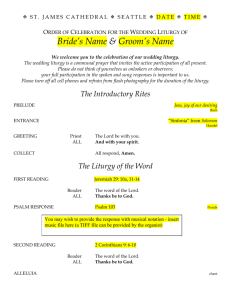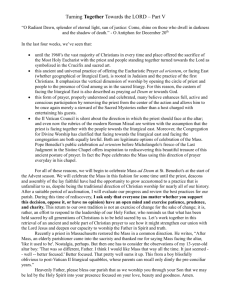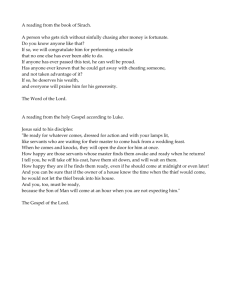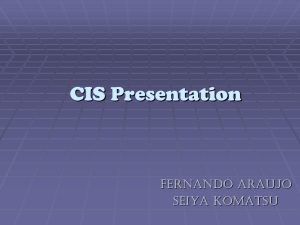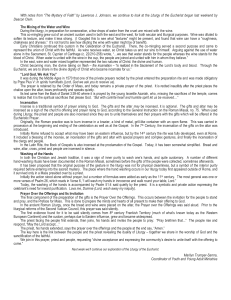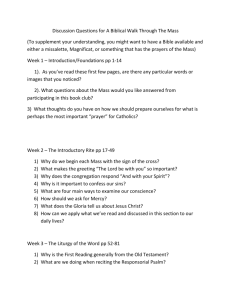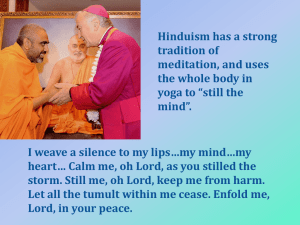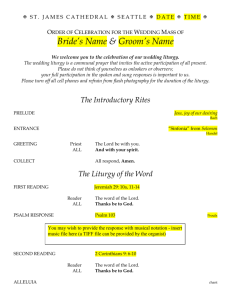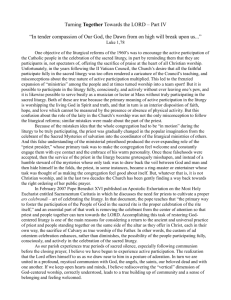Part III - St. Benedict Catholic Church, Duluth, MN
advertisement
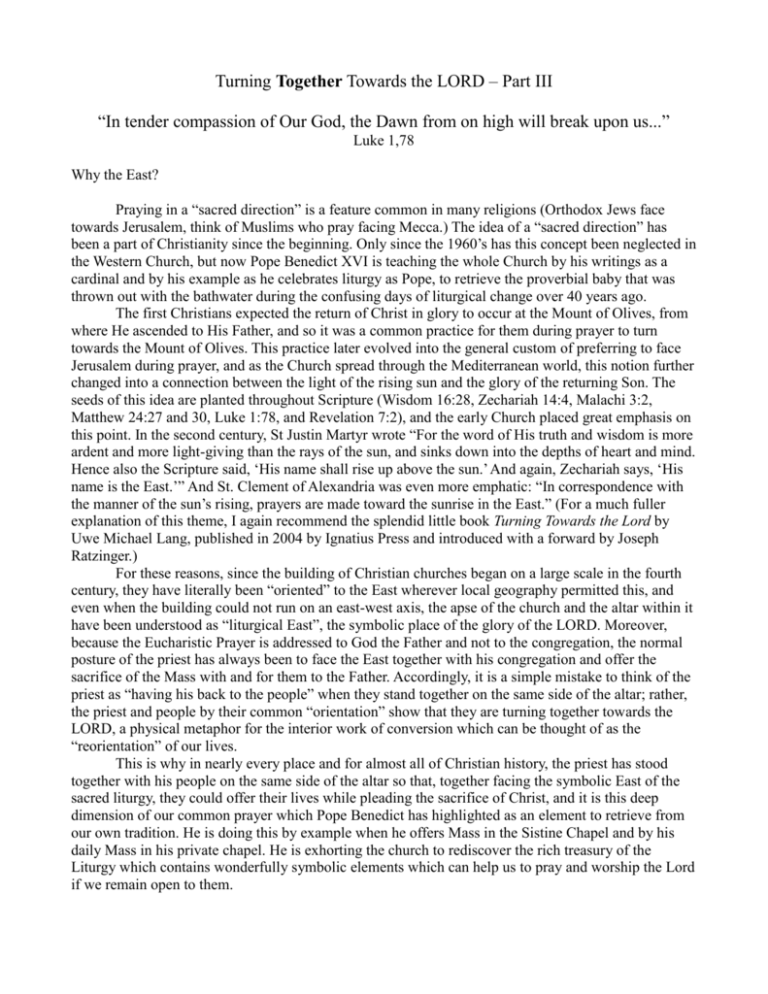
Turning Together Towards the LORD – Part III “In tender compassion of Our God, the Dawn from on high will break upon us...” Luke 1,78 Why the East? Praying in a “sacred direction” is a feature common in many religions (Orthodox Jews face towards Jerusalem, think of Muslims who pray facing Mecca.) The idea of a “sacred direction” has been a part of Christianity since the beginning. Only since the 1960’s has this concept been neglected in the Western Church, but now Pope Benedict XVI is teaching the whole Church by his writings as a cardinal and by his example as he celebrates liturgy as Pope, to retrieve the proverbial baby that was thrown out with the bathwater during the confusing days of liturgical change over 40 years ago. The first Christians expected the return of Christ in glory to occur at the Mount of Olives, from where He ascended to His Father, and so it was a common practice for them during prayer to turn towards the Mount of Olives. This practice later evolved into the general custom of preferring to face Jerusalem during prayer, and as the Church spread through the Mediterranean world, this notion further changed into a connection between the light of the rising sun and the glory of the returning Son. The seeds of this idea are planted throughout Scripture (Wisdom 16:28, Zechariah 14:4, Malachi 3:2, Matthew 24:27 and 30, Luke 1:78, and Revelation 7:2), and the early Church placed great emphasis on this point. In the second century, St Justin Martyr wrote “For the word of His truth and wisdom is more ardent and more light-giving than the rays of the sun, and sinks down into the depths of heart and mind. Hence also the Scripture said, ‘His name shall rise up above the sun.’ And again, Zechariah says, ‘His name is the East.’” And St. Clement of Alexandria was even more emphatic: “In correspondence with the manner of the sun’s rising, prayers are made toward the sunrise in the East.” (For a much fuller explanation of this theme, I again recommend the splendid little book Turning Towards the Lord by Uwe Michael Lang, published in 2004 by Ignatius Press and introduced with a forward by Joseph Ratzinger.) For these reasons, since the building of Christian churches began on a large scale in the fourth century, they have literally been “oriented” to the East wherever local geography permitted this, and even when the building could not run on an east-west axis, the apse of the church and the altar within it have been understood as “liturgical East”, the symbolic place of the glory of the LORD. Moreover, because the Eucharistic Prayer is addressed to God the Father and not to the congregation, the normal posture of the priest has always been to face the East together with his congregation and offer the sacrifice of the Mass with and for them to the Father. Accordingly, it is a simple mistake to think of the priest as “having his back to the people” when they stand together on the same side of the altar; rather, the priest and people by their common “orientation” show that they are turning together towards the LORD, a physical metaphor for the interior work of conversion which can be thought of as the “reorientation” of our lives. This is why in nearly every place and for almost all of Christian history, the priest has stood together with his people on the same side of the altar so that, together facing the symbolic East of the sacred liturgy, they could offer their lives while pleading the sacrifice of Christ, and it is this deep dimension of our common prayer which Pope Benedict has highlighted as an element to retrieve from our own tradition. He is doing this by example when he offers Mass in the Sistine Chapel and by his daily Mass in his private chapel. He is exhorting the church to rediscover the rich treasury of the Liturgy which contains wonderfully symbolic elements which can help us to pray and worship the Lord if we remain open to them.
